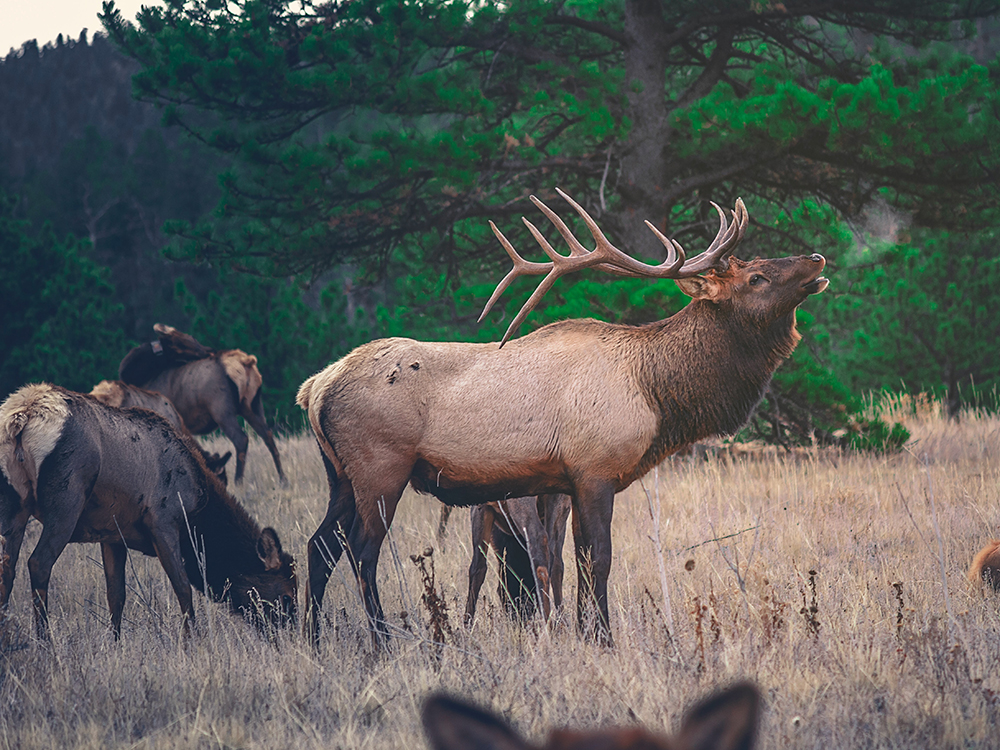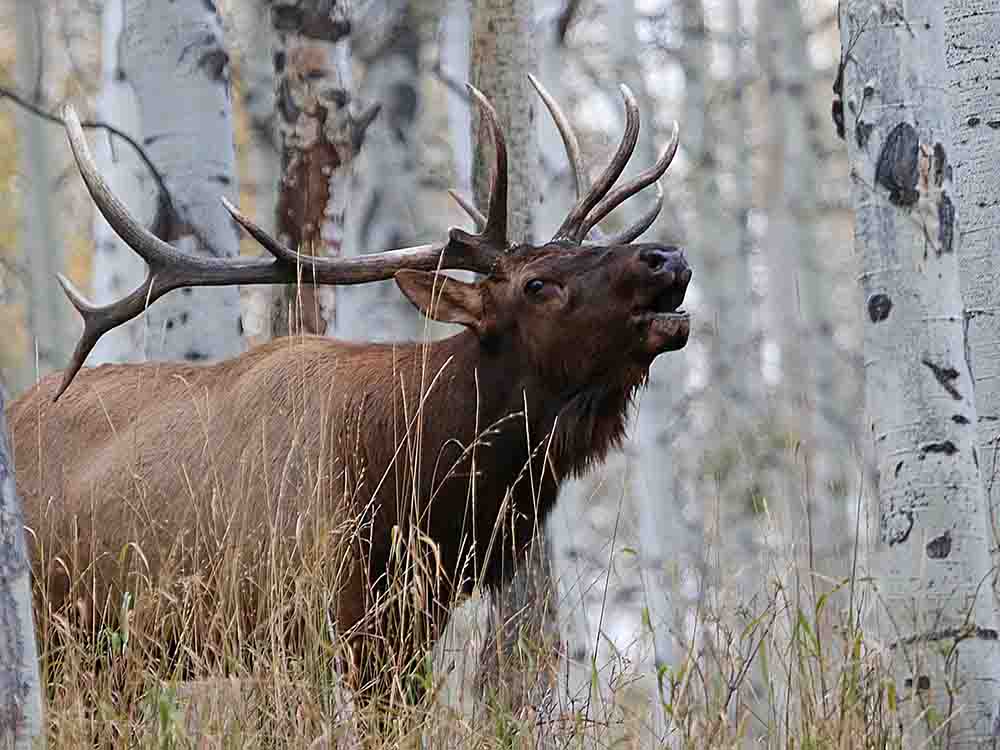Animal: Elk
The Elk, Cervus canadensis, became the official state animal by an act of the legislature in 1971 (Utah Code, 63G-1-601. State symbols). All elk in Utah are members of the subspecies Rocky Mountain elk (
Sometimes called wapiti by the Shawnee Indians and the scientists of later times, the American Elk was first named by early English colonists. They were once found over most of the United States and southern Canada, but hunters have killed so many of them that they survive only in regions west of the Rocky Mountains. The largest herds live in Yellowstone Park, on Montana's Sun River, and in Washington's Olympic Mountains. They are also plentiful on most mountain ranges in Utah.
A member of the deer family, the elk lives in close association with the deer and moose throughout much of Utah. Only the male elk carry antlers. They can spread more than 5 feet. Antlers grow during the summer and are shed in the late winter. The cows (female elk) are smaller than the male and do not have antlers. Mature bulls stand up to 60 inches at the shoulder and may weigh over 700 pounds.
They usually eat the grasses. They also eat the twigs and needles of fir, juniper, and trees and shrubs during a harsh winter.
Wolves and cougars are among the natural enemies of elk, as well as bear and coyotes that look for calves and sick animals.
Utah is the only state to designate the elk as the State Animal.
More About: Elk
Utah Information Sources
National Information Sources


